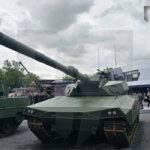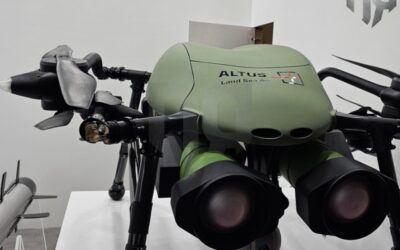With such a large number of interested attendees at MBDA’s pavilion at the Eurosatory 2024 Defence exhibition, the stand reminded of an…
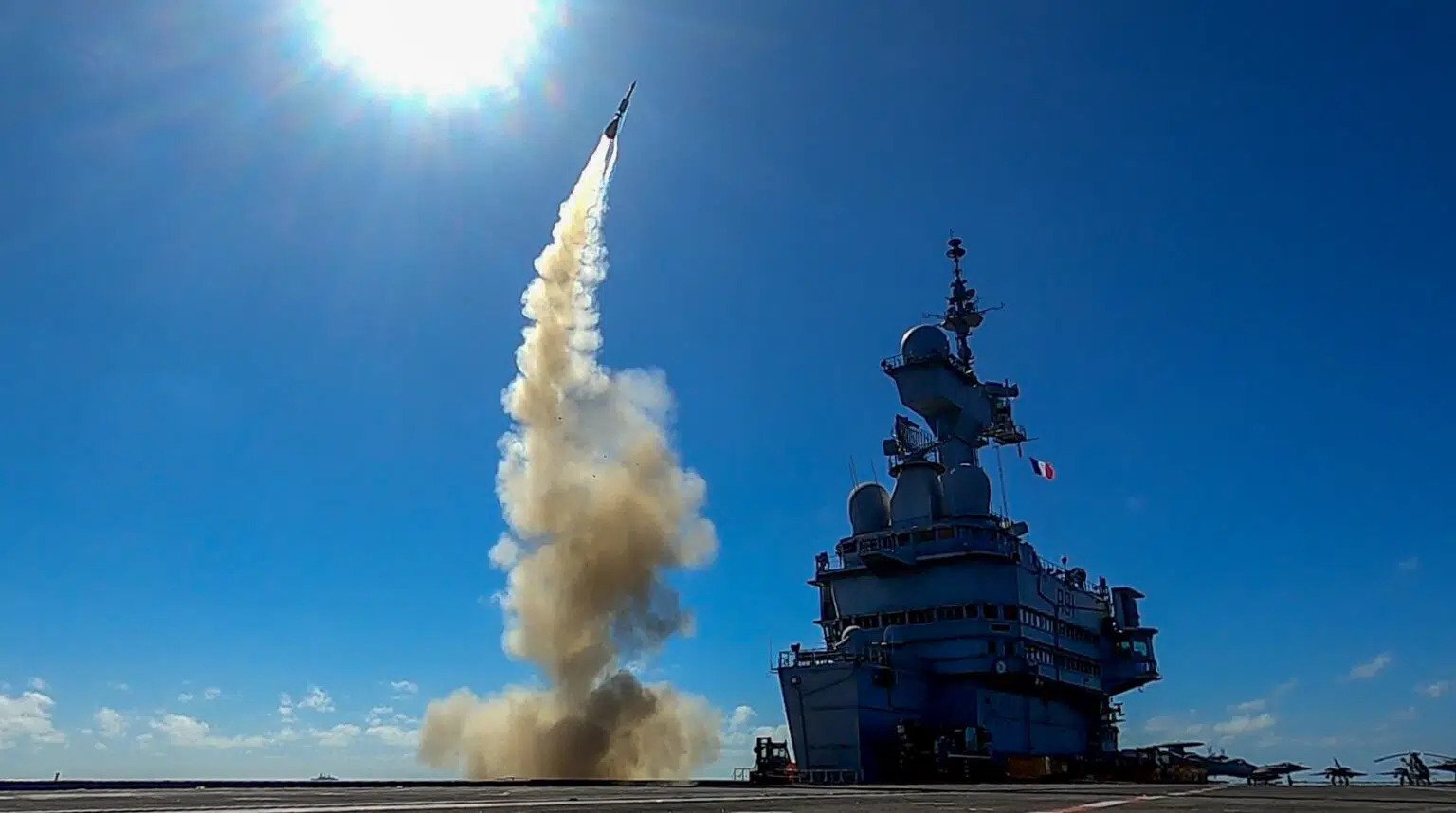
The French Navy (Marine Nationale) air defence destroyer “Chevalier Paul” and aircraft carrier “Charles de Gaulle” both intercepted aerial targets using their Aster surface-to-air missiles in a complex environment.
The test demonstrates the French carrier strike group’s (CSG) capability to defend against missile threats.
According to the French Navy, the test was conducted on October 4, 2022 “in an environment artificially reproducing a naval aviation situation close to that encountered in theaters of operation. The neutralization of the high-speed air threat was thus achieved in a denied environment, the fire control radar of the Chevalier Paul having been deliberately jammed.”
The same day, in the afternoon, the nuclear-powered aircraft carrier Charles de Gaulle successfully intercepted a target using an Aster 15 surface-to-air missile. This test was also conducted in a denied environment, in the context of the CSG being under missile threats.
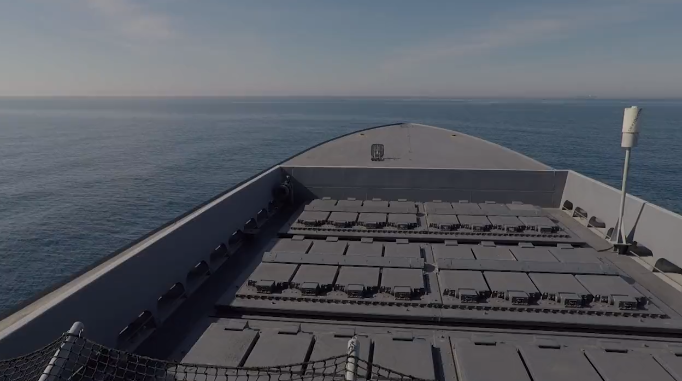
🚀 Tirs Aster réussis pour le Chevalier Paul et le Charles de Gaulle, parés à faire face aux menaces missiles ! Ces tirs démontrent les capacités du porte-avions et des frégates de défense aérienne à assurer la défense aérienne du groupe aéronaval (GAN) @French_CSG. ⤵ pic.twitter.com/pcZMt499Pl
— Marine nationale (@MarineNationale) October 6, 2022
According to the French Navy statement, Chevalier Paul was acting as the CSG’s chief of air defence. Both the destroyer and carrier trained their crews to deal with high-intensity situations likely to be encountered in operations.
About MBDA Aster missiles
The Aster family of missiles was originally designed by MBDA for the Marine Nationale, Royal Navy, and Italian Navy to counter supersonic anti-ship missiles. More than 100 Aster missiles have been fired to date.
The Aster missile family comprises Aster 15 for short to medium range and Aster 30 for medium to long range. There is extensive commonality between the two variants with both missiles featuring the same terminal dart. According to MBDA, Aster’s terminal dart is a lightweight, highly maneuvering and agile missile equipped with a high-performance active RF seeker. Their difference in range and interception speed lies in the fact that Aster 30 uses a much larger booster.
Thanks to the unique combination of aerodynamic control and direct thrust vector control called “PIF-PAF”, the missile is capable of high maneuvers. Together, these features give Aster an unmatched hit-to-kill capability.
Aster missiles are in service on the latest vessels brought into service by three of Europe’s major navies: Italy, France, and the United Kingdom. Aster missile naval air defence systems are also in service with several other navies around the world such as Saudi Arabia, Qatar, Singapore, and – in the near future – Greece.
The Aster 15 and Aster 30 are a Franco-Italian family of all-weather, vertical launch surface-to-air missiles. “Aster” stands for “Aérospatiale Terminale” (French company Aérospatiale has been the project’s lead contractor before its missile activities were merged into MBDA).
The missiles as well as the related weapon systems are manufactured by Eurosam, a consortium consisting of MBDA France, MBDA Italy (both with a combined 66% share), and Thales (holding 33%).
Also read: ILA 2022 | MBDA unveils its new, stand-off surface-to-surface JFS-M missile system – VIDEO
Aster 15 missile characteristics
- Weight: 310 Kg
- Length: 4.2 meters
- Diameter: 180 mm
- Operational range: Over 30 Km
- Maximum Speed: Mach 3
Aster 30 missile characteristics
- Weight: 430 Kg
- Length: 4.9 meters
- Diameter: 180 mm
- Operational range: Over 100 Km
- Max Speed: Mach 3
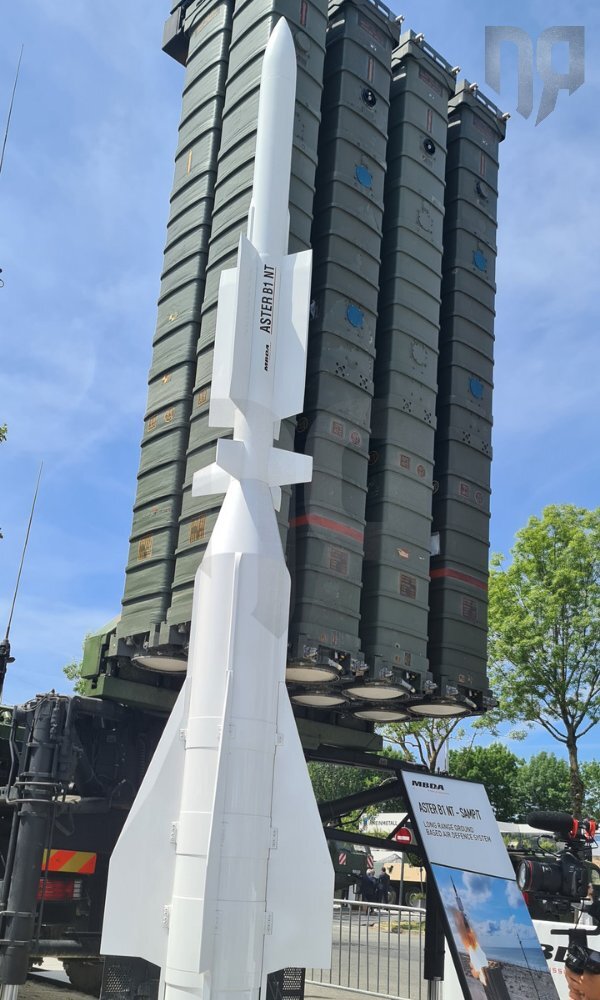
2/2 βλήμα #AsterB1NT το οποίο είναι συμβατό με εκτοξευτές Aster διαθέτει ειδικής σχεδίασης εκρηκτική κεφαλή η οποία σε 2 μέτρων διαπερνά το περίβλημα τέτοιων πυραύλων (μεσαίου & μεγάλου βεληνεκούς). Στα άλλα + του βλήματος η λειτουργία σε #Ka_band. 2η 📷 από #Eurosatory2022 pic.twitter.com/LyWtAEDOYG
— DEFENCE ReDEFiNED (@Def_Redefined) June 26, 2022
About Aster 30 Block 1NT
The Aster 30 Block 1 NT missile evolution consists of a new seeker operating in Ka-band, replacing the current Ku band seeker, as well as a new improved weapon controller. This change delivers a significant performance enhancement.
READ MORE
KNDS | Showcases full range of LEOPARD battle tanks at EUROSATORY
KNDS continues to expand its technological advantage in the field of main battle tank development, as we have witnessed at the Defence and…
THEON SENSORS | Distinguishing appearance at EUROSATORY 2024 with new range of products
THEON SENSORS attended the International Defence and Security Exhibition EUROSATORY 2024 as an ambassador of Greek innovation…
EUROSATORY 2024 | Missile Artillery Solutions from MBDA
With such a large number of interested attendees at MBDA’s pavilion at the Eurosatory 2024 Defence exhibition, the stand reminded of an…
KNDS | Showcases full range of LEOPARD battle tanks at EUROSATORY
KNDS continues to expand its technological advantage in the field of main battle tank development, as we have witnessed at the Defence and…
THEON SENSORS | Distinguishing appearance at EUROSATORY 2024 with new range of products
THEON SENSORS attended the International Defence and Security Exhibition EUROSATORY 2024 as an ambassador of Greek innovation…
Ministry of Defence | Organization of Hellenic EDF Info Day
A Conference entitled “EDF Info Day” is organized in the Amphitheater of the National Gallery on Tuesday, July 9 from 09:00 to 17:00.
ALTUS LSA | Participates in EUROSATORY 2024 with KERVEROS in the foreground
The participation of ALTUS LSA in EUROSATORY 2024 is among the Greek participations of operational significance.
Freddy Beleris | Ιn jail until October
The elected mayor of Heimarra and Member of the European Parliament of New Democracy will remain in prison until October…








